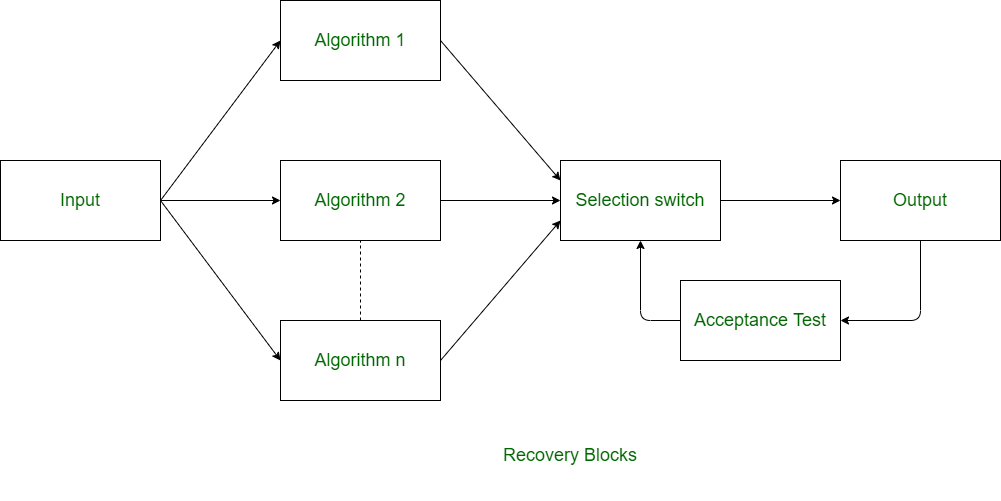Difference between Recovery Blocks and CPR Recovery
Last Updated :
22 May, 2020
Prerequisite – Fault-tolerance Techniques
1. Recovery blocks :
In recovery block technique, different algorithms are used for different try blocks. Try blocks are basically the redundant components. Here the redundant copies are not run simultaneously. The result in each try is block is tested by acceptance test.

2. Check-pointing and Rollback Recovery (CPR Recovery) :
Check-pointing rollback recovery technique is different from recovery block technique of software fault-tolerance. When we perform some computation each time system is tested in this technique. When there is processor failure or data corruption, this technique is quite useful.

Difference between Recovery Blocks and CPR Recovery:
| RECOVERY BLOCKS |
CPR RECOVERY |
| Different copies of software are developed by different algorithms. |
Only a single copy of software is developed. |
| Redundant copies are run one by one. |
No redundant copies are available here. |
| System is not tested each time after computation. |
System is tested each time after computation. |
| Selection switch is required to choose between different copies. |
No any selection switch is required here. |
| It is used in case of less chance of processor failure. |
While it is useful when chances of processor failure is high. |
| This technique is used where chances of data corruption is less. |
While it is used where chances of data corruption is high. |
| It is used with tasks having more laxity. |
It is used with tasks having normal laxity. |
| It is not high efficient for critical systems. |
It is moderate efficient for all systems. |
| It is used only if task deadline is more than task computation time. |
No such condition is required for this technique. |
Share your thoughts in the comments
Please Login to comment...